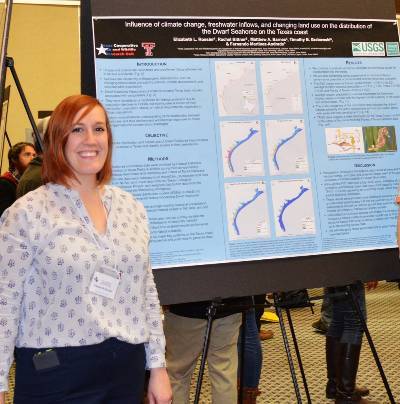ANRS/NRM Photo Contest 2016
PhD student Beth Roesler answers some questions about her 3rd place winning photograph and the research it captures.
Maggie Zebracka: When and where was the photo taken?
Beth Roesler: The photo was taken in 2012 at Bitter Lake National Wildlife Refuge in Roswell, NM.
MZ: What are you doing in the photo?
BR: After a duck banding effort, I am releasing a Northern Pintail to let it go back onto the wetlands.
MZ: What kind of research were you working?
BR: We were working on duck banding for the National Bird Banding Program effort to be submitted to the USGS.
MZ: What are the long-term goals of the duck banding effort?
BR: The long-term goals of the duck banding effort are to determine the distribution and range of waterfowl in the continental U.S. These data contribute to an understanding of the life history and population dynamics of various duck species and is critical to evaluations of management actions, including the establishment of appropriate exploitation rates for hunting; assessments for actions to improve the status of a species, especially threatened and endangered species; or assessments of the effects of changes of habitats on all bird species.
MZ: Since the photo was taken in 2012, are you still working on this project? If not, what project are you working on now?
BR: I am no longer working on that project. My current project involves the creation of species distribution models of Dwarf Seahorses (Hippocampus zosterae) to understand the broad impacts of urbanization and development, habitat loss, aquarium trade, etc. that contribute to their decline.

Beth Roesler is a PhD student in the department of Natural Resources Management. Her research title is "Influence of climate change, freshwater inflows, and changing land use on the distribution of seahorses and pipefishes on the Texas coast."
Maggie Zebracka is the Graduate Program Assistant for NRM.
Department of Natural Resources Management
-
Address
Goddard Building, Texas Tech University, Box 42125, Lubbock TX 79409 -
Phone
806.742.2841 -
Email
nrm@ttu.edu
